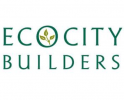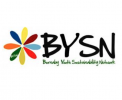Since this reno is focused more on being carbon neutral than on anything else, some design aesthetics and material choices will be determined by what we have already, or what we waste, recycled, or reclaimed we have access to. We’re cheating here a little bit because a) we have some new, unused, material left over from renovating the rest of our house and b) I am part owner of two construction-related companies.
That being said, I think using all of the carbon-free resources available is an important point to make. If that means taking advantage of your own skillset to offset trades commuting to the site then all the better.
So, as far as available materials are concerned:
At our house, we currently have 3 sheets of drywall, a couple hundred linear feet of MDF baseboard and window moulding, sufficient nails, staples, screws, drywall mud and tape, paint (several colours), hardwood flooring sealer, several hundred feet of fir wainscoting and a few dozen random lumber pieces.
After the demolition we expect to have a few hundred linear feet of two by fours and 10-15 sheets of plywood.
At my pool building company, I have access to waste rebar, lathe, concrete mix and all the necessary tools for concrete work. At the home construction company, I have access to as many trim pieces of lumber as possible (my idea here is to do a feature wall out of these a la the new Vancouver Convention Centre as seen here:http://www.flickr.com/photos/vancouverconvention/3425078322/), trim waste plywood and other sheet materials from our millwork shop. Perhaps the most encouraging item I can reclaim is a pallet of trim Warmboard (www.warmboard.com) that we use in our homes. The warmboard is an engineered sub-floor routered to house pvc piping. The plywood has a thin layer of aluminum between it and the piping, creating radiant floor heating (perfect for thermal mass in a three-storey postage-stamp heritage house).
Although this comparison relates to electrical radiant floor heating, the pros and cons are outlined here:
http://www.warmzone.com/radiant_air.asp
What I have on-hand, or access to is really the first step because it shows me which way several things should go. With the discovery of the re-usable radiant flooring, the energy assessment and retrofit will follow and be informed by it.

































